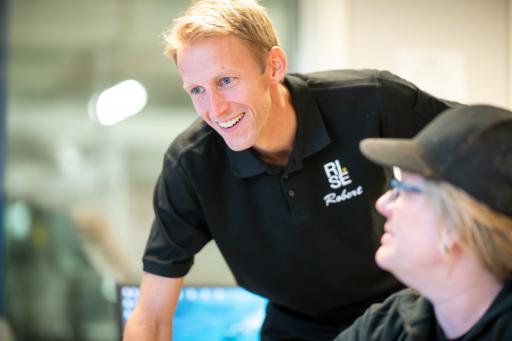Research ahead

Traditionally, the lignin is burned and used as an energy source in pulp and paper mills. At Bäckhammar mill we use it as energy source but also we supply LignoCity's research with lignin since year 2016. Rise extracts sulphate lignin that has the potential to be used for so much more instead. For example, as a component of glue, surface treatment, dispersants and even carbon fiber and electrode materials in batteries.
LignoCity is a research and production plant. Here you will find RISE´s test bed for development of different value chains from sulphate lignin, upscaling of lignin separation, lignin processing and further development of lignin-based products. In 2020, a new laboratory was completed that provides the opportunity for smaller actors to build their pilot and accelerate the number of products. Nordic Paper is a co-financier but also assists LignoCity with premises, steam supply, compressed air and cooling water in addition to the sulphate lignin.
-To us, LignoCity means a lot. As a leader in the paper and pulp industry, it is important to be able to contribute to the global sustainability goals through innovation, says Kristin Israelsson, Factory Manager in Bäckhammar.
The knowledge and expertise in the field of lignin is in some parts a world leading at the plant. National and international media report extensively on the activities. In 2021, for example, a collaborative project was launched between NCC and RISE to test whether sulphate lignin can replace fossil raw materials in asphalt
Lignocitys förhoppning är att testbädden ska stå på tre ben. Det första är att just att utvinna lignin från sulfatligninet, för att kunna förse företag och andra intressenter med lignin för forskning och olika innovationer på marknaden.
Lignocity aims for the test bed to stand on three legs. The first one, is to extract lignin from the sulphate lignin, to provide companies and other stakeholders with lignin for research and various innovations in the market.
The second leg is offering a physical plant and the conditions to succeed with an upscaling of ideas in bioeconomy for pilots.
-We want to increase the scope of the test bed and seek collaborations with innovators outside Sweden's borders. This means that we can help shorten the path from idea to market, says Robert Gustavsson, project manager and business developer at LignoCity.
The third leg of LignoCity is to reduce the smell of lignin since the market has zero tolerance. LignoCity has started the construction of a supplementary test bed, which can greatly reduce the smell and thus open up new areas for lignin-based products.
The LignInnovation project is currently underway, which Nordic Paper co-finances. The project, which was launched in 2021, aims primarily at increased digitalization that will make LignoCity even more accessible.